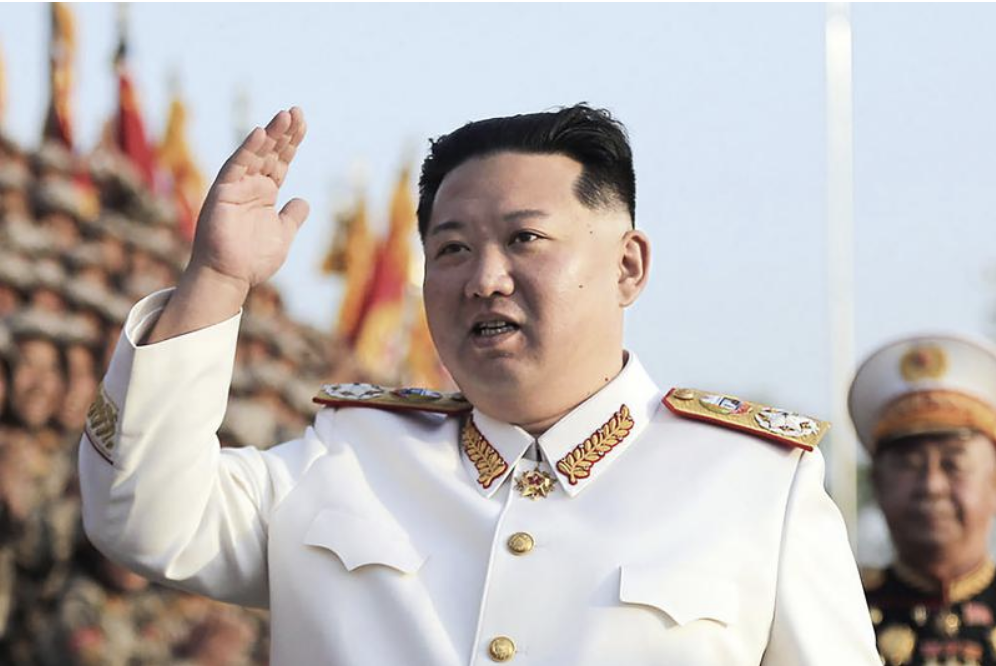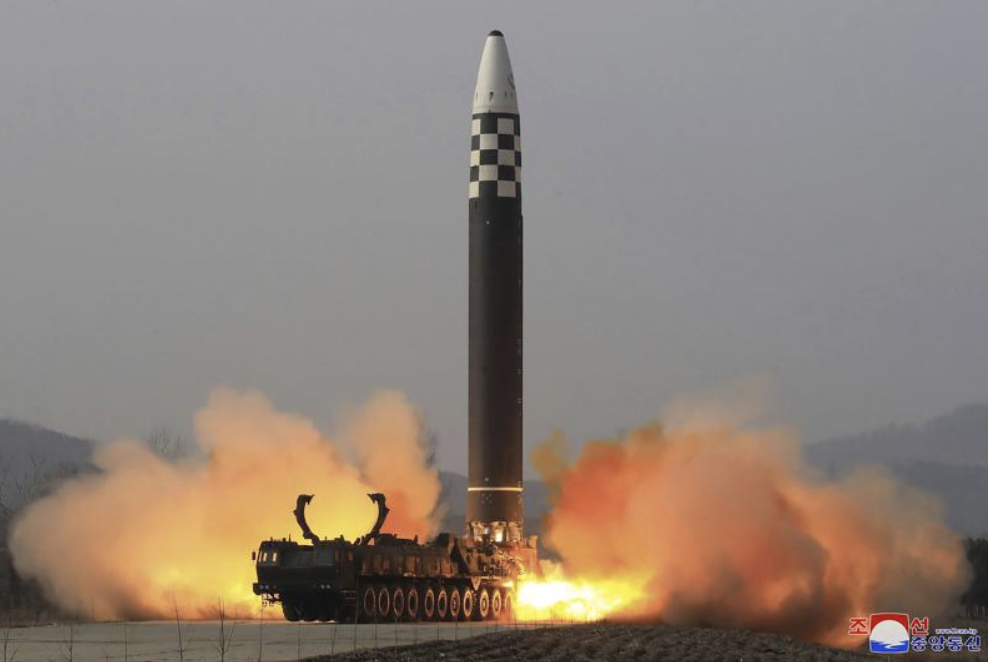North Korea Threatens Preemptive Strike If Threatened: Should The West be Concerned?
North Korean leader Kim Jong Un attends the 90th anniversary of the founding of the Korean People’s Revolutionary Army, in North Korea, on April 27, 2022. Photo: Korean Central News Agency via AP
Speaking at a massive military parade commemorating the 90th founding anniversary of the Korean People’s Revolutionary Army, Kim Jong Un emphasized the importance of nuclear weapons and nuclear deterrence in the Democratic People’s Republic of Korea’s (DPRK) foreign policy. The Korean Central News Agency, North Korea’s state-run media agency, relayed that Kim Jong Un said the DPRK would “preemptively and thoroughly contain and frustrate all dangerous attempts and threatening moves, including ever-escalating nuclear threats from hostile forces, if necessary.”
This statement followed the leader’s commitment to further nuclear development, as the latest North Korean ICBM was showcased at the event. The Hwasong-17, the latest ICBM model, was claimed to have been tested earlier this month. However, South Korean officials concluded that the older Hwasong-15 was tested instead.
Other missiles were also showcased at the event, including a hypersonic missile and a submarine platformed ballistic missile. For information on the submarine missile, read more about it here.
These comments are almost certainly directed at South Korea, which currently sits under the American protective nuclear blanket. Indeed, the escalation of threats from North Korea has prompted President Biden to announce his fourth foreign trip of his presidency; he will be meeting with South Korean president Yoon Suk Yeol and Japanese Prime Minister Kishida Fumio.
In recent times, North Korea’s preemptive strike capabilities have improved greatly. In the conducting of new tests, The DPRK has demonstrated an ability to potentially strike at the U.S. mainland.
This photo distributed by the North Korean government shows what it says is a test-fire of a Hwasong-17 intercontinental ballistic missile at an undisclosed location in North Korea on March 24, 2022. Photo: KCNA via AP
While this has theoretically been possible since 2017, American missile defense infrastructure in Alaska would be able to likely neutralize North Korea’s strikes if these missiles approached the continental U.S. from the Pacific Ocean. However, with the newest Hwasong-17, the DPRK has the potential capability to launch its missile to strike the US from the Atlantic side.
However, technologically North Korea is still far from developing a certifiable threat to the safety of the American mainland. Chief among technological needs is the development of multiple warhead ICBMs, which would likely circumvent much of the American missile defense infrastructure.
Regardless of North Korea’s future technological advancements, The Kim regime’s nuclear capabilities, strengthened by the developments in the past year, has become an elevated nuclear threat. As Leif-Eric Easley, a professor of international studies at Seoul Ewha Womans University explained: “taken together with ambitions for tactical nuclear warheads, submarine-based launch capabilities, and more sophisticated ICBMs, Pyongyang is not simply looking to deter an attack. Its goals extend to outrunning South Korea in an arms race and coercing the United States to reduce sanctions enforcement and security cooperation with Seoul.” If the U.S. wants to continue to defend its allies in the Pacific, it needs to tackle this rising threat.


